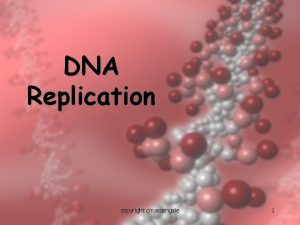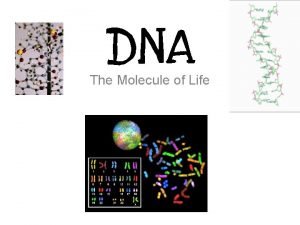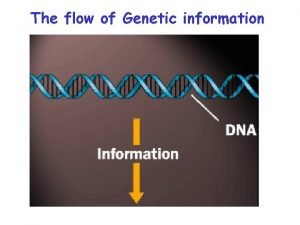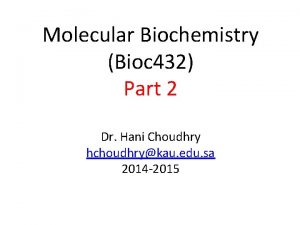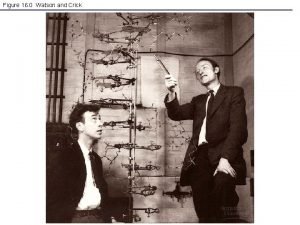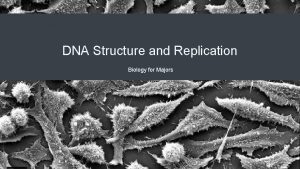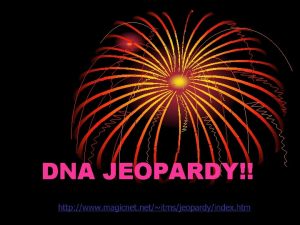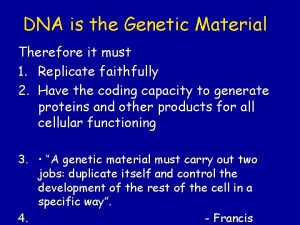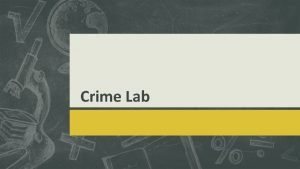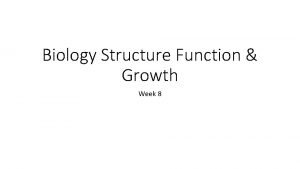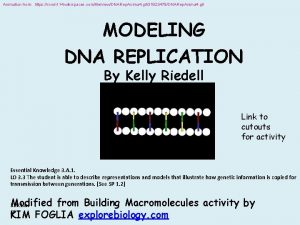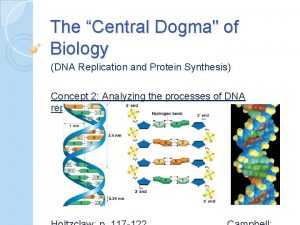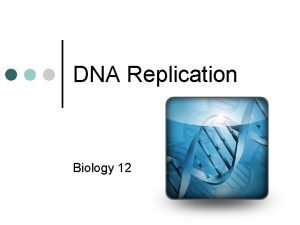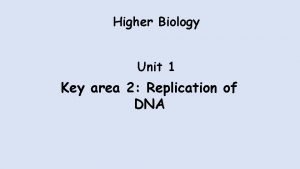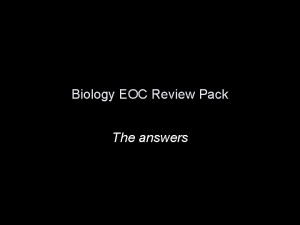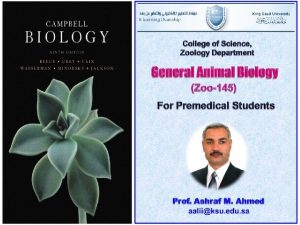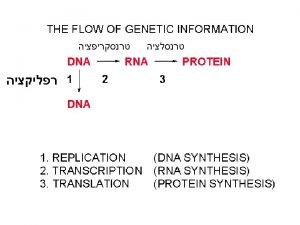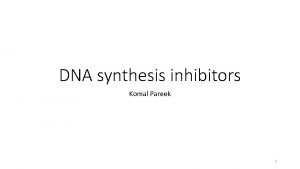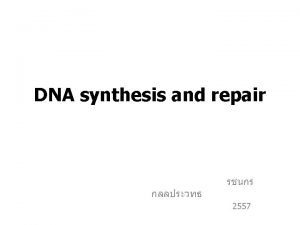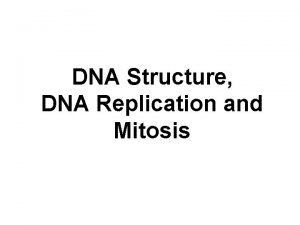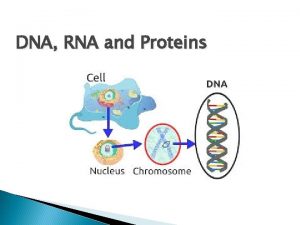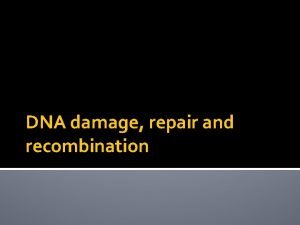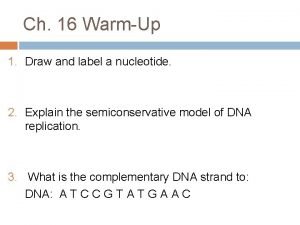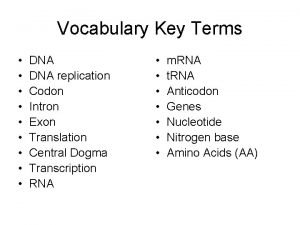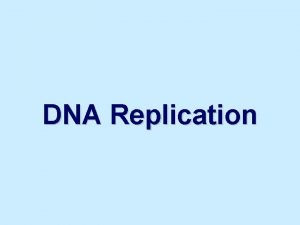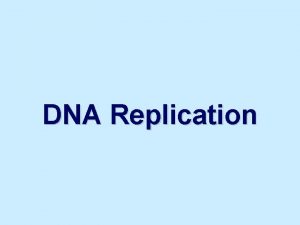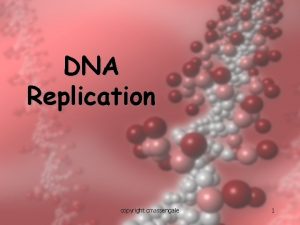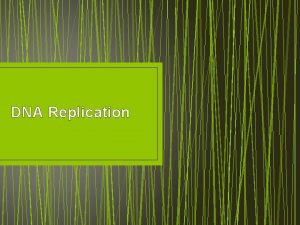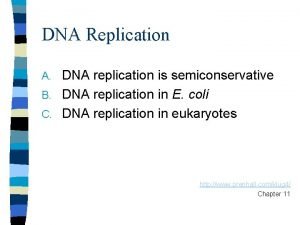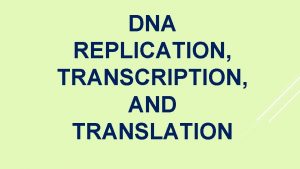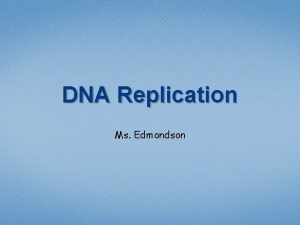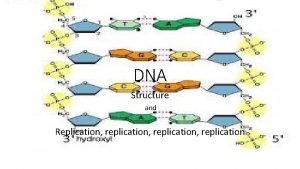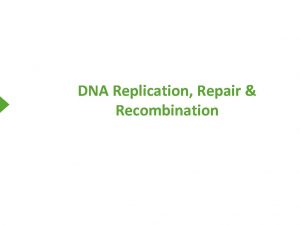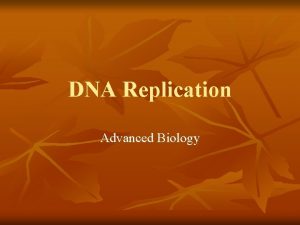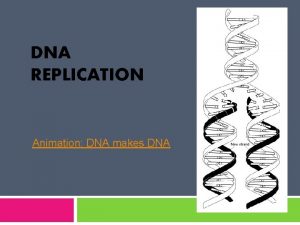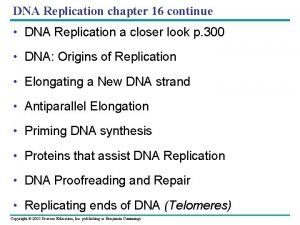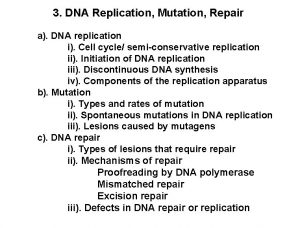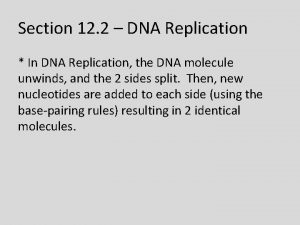DNA Replication 1 Replication Facts DNA has to
































- Slides: 32

DNA Replication 1

Replication Facts • DNA has to be copied before a cell divides • DNA is copied during the S or synthesis phase of interphase • New cells will need identical DNA strands 2

Synthesis Phase (S phase) • S phase during interphase of the cell cycle • Nucleus of eukaryotes S phase DNA replication takes place in the S phase. G 1 interphase G 2 Mitosis -prophase -metaphase -anaphase -telophase 3

Steps in DNA Replication Occurs when chromosomes duplicate (make copies) q Enzyme DNA Helicase unwinds & separates the 2 DNA strands by breaking the weak hydrogen bonds as enzymes “unzip” the molecule Each old strand of nucleotides serves as a template for each new strand New nucleotides move into complementary positions are joined by DNA polymerase 4

DNA Replication • Begins at Origins of Replication • One strand serves as a mold for another strand to be copied • Two strands open forming Replication Forks (Y-shaped region) • New strands grow at the forks 5’ Parental DNA Molecule 3’ Replication Fork 3’ 5 5’

Two New, Identical DNA Strands Result from Replication 6

Another View of Replication 7

PROTEIN SYNTHESIS 8

Protein Synthesis § The production (synthesis) of polypeptide chains (proteins) § Two phases: Transcription & Translation § m. RNA must be processed before it leaves the nucleus of eukaryotic cells 9

DNA makes proteins that are needed for growth, repair and all life functions Ex: collagen - cartilage and tendons hemoglobin – blood carries oxygen through the body keratin - hair and fingernails insulin – metabolizes blood sugars …muscles, skin, etc… 10

DNA RNA Protein DNA Transcription m. RNA Ribosome Translation Protein Prokaryotic Cell 11

DNA RNA Protein Nuclear membrane DNA Transcription Eukaryotic Cell Pre-m. RNA Processing m. RNA Ribosome Translation Protein 12

Pathway to Making a Protein DNA m. RNA t. RNA (ribosomes) Protein 13

RNA 14

RNA Differs from DNA 1. RNA DNA 2. RNA DNA 3. RNA DNA has a sugar ribose has a sugar deoxyribose contains the base uracil (U) has thymine (T) molecule is single-stranded is double-stranded 15

Structure of RNA 16

. Three Types of RNA • Messenger RNA (m. RNA) carries genetic information to the ribosomes • Ribosomal RNA (r. RNA), along with protein, makes up the ribosomes • Transfer RNA (t. RNA) transfers amino acids to the ribosomes where proteins are synthesized 17

Making a Protein 18

Genes & Proteins § Proteins are made of amino acids linked together by peptide bonds § 20 different amino acids exist § Amino acids chains are called polypeptides § Segment of DNA that codes for the amino acid sequence in a protein are called genes 19

Two Parts of Protein Synthesis § Transcription makes an RNA molecule complementary to a portion of DNA § Translation occurs when the sequence of bases of m. RNA DIRECTS the sequence of amino acids in a polypeptide 20

Genetic Code § DNA contains a triplet code § Every three bases on DNA stands for ONE amino acid § Each three-letter unit on m. RNA is called a codon § Most amino acids have more than one codon! § There are 20 amino acids with a possible 64 different triplets § The code is nearly universal among living organisms 21

Steps in Transcription § The transfer of information in the nucleus from a DNA molecule to an RNA molecule § Only 1 DNA strand serves as the template § Starts at promoter DNA (TAC box) § Ends at terminator DNA (stop) § When complete, m-RNA molecule is released 22

RNA Polymerase § Enzyme found in the nucleus § Separates the two DNA strands by breaking the hydrogen bonds between the bases § Then moves along one of the DNA strands and links RNA nucleotides together 23

DNA RNA Polymerase pre-m. RNA 24

Transcription 25

Transcription Translation amino acids 26

Overview of Transcription § During transcription in the nucleus, a segment of DNA unwinds and unzips, and the DNA serves as a template for m. RNA formation § RNA polymerase joins the RNA nucleotides so that the codons in m. RNA are complementary to the triplet code in DNA 27

28

29

What is the enzyme responsible for the production of the m. RNA molecule? 30

Question: § What would be the complementary RNA strand for the following DNA sequence? DNA 5’-GCGTATG-3’ 31

Answer: • DNA 5’-GCGTATG-3’ • RNA 3’-CGCAUAC-5’ 32
 Bioflix activity dna replication dna replication diagram
Bioflix activity dna replication dna replication diagram Dna replication facts
Dna replication facts Replication
Replication Chapter 11 dna and genes
Chapter 11 dna and genes Forms of dna
Forms of dna Dna replication steps
Dna replication steps 3-5 exonuclease vs 5-3 exonuclease
3-5 exonuclease vs 5-3 exonuclease Okazaki fragments
Okazaki fragments Polyribosomes
Polyribosomes Multiple choice questions on dna structure and replication
Multiple choice questions on dna structure and replication Major enzymes in dna replication
Major enzymes in dna replication Accgtat
Accgtat Dna jeopardy
Dna jeopardy Dna replication fork
Dna replication fork Missy baker
Missy baker What is the name
What is the name Kim foglia dna replication
Kim foglia dna replication Bioflix dna replication
Bioflix dna replication Dna replication
Dna replication Fork dna
Fork dna Dna replication transcription and translation
Dna replication transcription and translation Higher biology dna replication
Higher biology dna replication Why is dna replication considered semiconservative
Why is dna replication considered semiconservative Dna replication pearson
Dna replication pearson Direction of helicase
Direction of helicase Dna replication in bacteria occurs
Dna replication in bacteria occurs Dna replication
Dna replication Dna replication eukaryotes
Dna replication eukaryotes Dna replication
Dna replication Dna replication comic strip
Dna replication comic strip Accuracy of dna replication
Accuracy of dna replication Bioflix dna replication
Bioflix dna replication Dna replication
Dna replication

